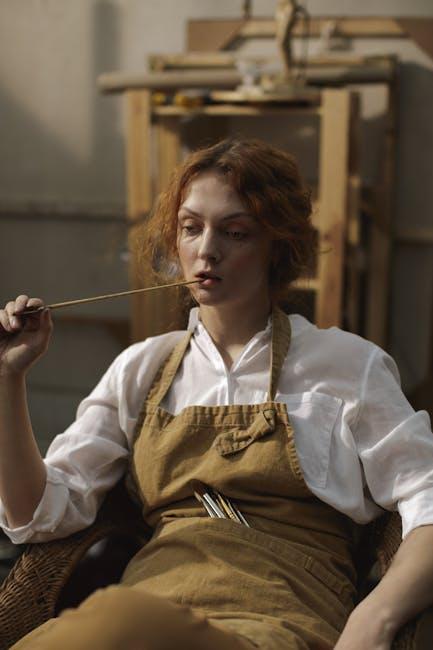In the dimly lit world of a recording studio, where shadows dance and silence reigns, an artist wields an unlikely arsenal: shoes, leaves, and the occasional coconut shell. These are the tools of the Foley artist, a magician of sound who breathes life into the silent world of film. While the actors deliver lines and the directors shape stories, it is the Foley artist who ensures that every footstep, rustling fabric, and clinking glass resonates with authenticity. This hidden craft, often overlooked by audiences, is the heartbeat of cinematic realism, transforming mere images into immersive experiences. Join us as we delve into the fascinating role of Foley artists and uncover the secrets behind making movies sound real.
Crafting the Illusion: How Foley Artists Bring Everyday Sounds to Life
In the magical realm of cinema, the auditory experience is as crucial as the visual. Foley artists are the unsung heroes who meticulously craft the sounds that bring movies to life. From the gentle rustle of a silk dress to the ominous creak of a floorboard, these artists recreate everyday noises with uncanny precision. Their work is an art form, requiring an acute understanding of acoustics and a dash of creativity. Using an array of props and materials, they replicate sounds that might otherwise go unnoticed, ensuring every whisper and footstep resonates with authenticity.
- Footsteps: Different surfaces and shoes create distinct sounds, from high heels on marble to sneakers on gravel.
- Weather Effects: Simulating rain, thunder, or wind often involves inventive techniques like shaking sheets of metal or sprinkling rice on various surfaces.
- Clothing Rustles: Capturing the subtle swish of fabric can add depth to a character’s movement and presence.
By blending these elements seamlessly into the film’s soundscape, Foley artists breathe life into the onscreen world, making the impossible feel tangible and the ordinary extraordinary.

Behind the Scenes: Techniques and Tools of the Foley Trade
Foley artists are the unsung heroes of film sound, using a combination of creativity and technical skill to bring scenes to life. Their toolkit is a fascinating array of everyday objects and specialized equipment, each chosen for its ability to mimic real-world sounds. From coconut shells clapped together to simulate horse hooves to cellophane for the crackling of fire, the possibilities are endless.
The process often involves the use of a Foley stage, a space equipped with various surfaces like gravel, sand, or concrete to replicate the environment of a scene. Microphones are strategically placed to capture every nuance, while digital audio workstations (DAWs) allow for precision editing and layering of sounds. The artistry lies in the subtlety—creating an immersive auditory experience without drawing attention away from the narrative.
- Props: Cornstarch for snow, leather for creaking saddles.
- Surfaces: Wood for footsteps, metal for clanging armor.
- Tools: Microphones, DAWs, sound libraries.

Creating the Perfect Soundscape: Insights from Top Foley Professionals
Foley artists are the unsung heroes of the film industry, crafting the auditory magic that breathes life into every scene. Their work involves the meticulous recreation of everyday sounds, from the rustle of a fabric to the crunch of footsteps on gravel. These soundscapes are not mere background noise; they are an integral part of storytelling that enhances the audience’s immersion.
- Attention to Detail: Foley professionals focus on even the subtlest sounds to ensure authenticity.
- Creative Innovation: They often invent new techniques and tools to produce unique sound effects.
- Collaborative Spirit: Working closely with directors and sound designers, they ensure the auditory elements align perfectly with the visual narrative.
By layering these expertly crafted sounds, Foley artists elevate the cinematic experience, transforming it into a sensory journey that feels both vivid and real. Their artistry is a testament to the power of sound in storytelling, illustrating how a perfectly timed creak or whisper can evoke emotion and build tension.
Enhancing Authenticity: Recommendations for Aspiring Foley Artists
To bring a film’s soundscape to life, aspiring Foley artists must hone their skills with dedication and creativity. One key aspect is immersive observation. Spend time listening to everyday sounds in various environments—notice how footsteps change on different surfaces or how fabric rustles against skin. This keen awareness will help you replicate these sounds authentically in the studio.
Experimentation is another vital component. Create a personal library of sounds using unconventional materials. Here are some ideas to get started:
- Vegetables and fruits: Use them to simulate bone crunches or squishy impacts.
- Household items: Experiment with pots, pans, and glassware for unique sound effects.
- Fabric manipulation: Different textiles can mimic a variety of movements and interactions.
By combining acute observation with innovative experimentation, you’ll enhance the authenticity of your work, making the film’s auditory experience as compelling as its visual narrative.

